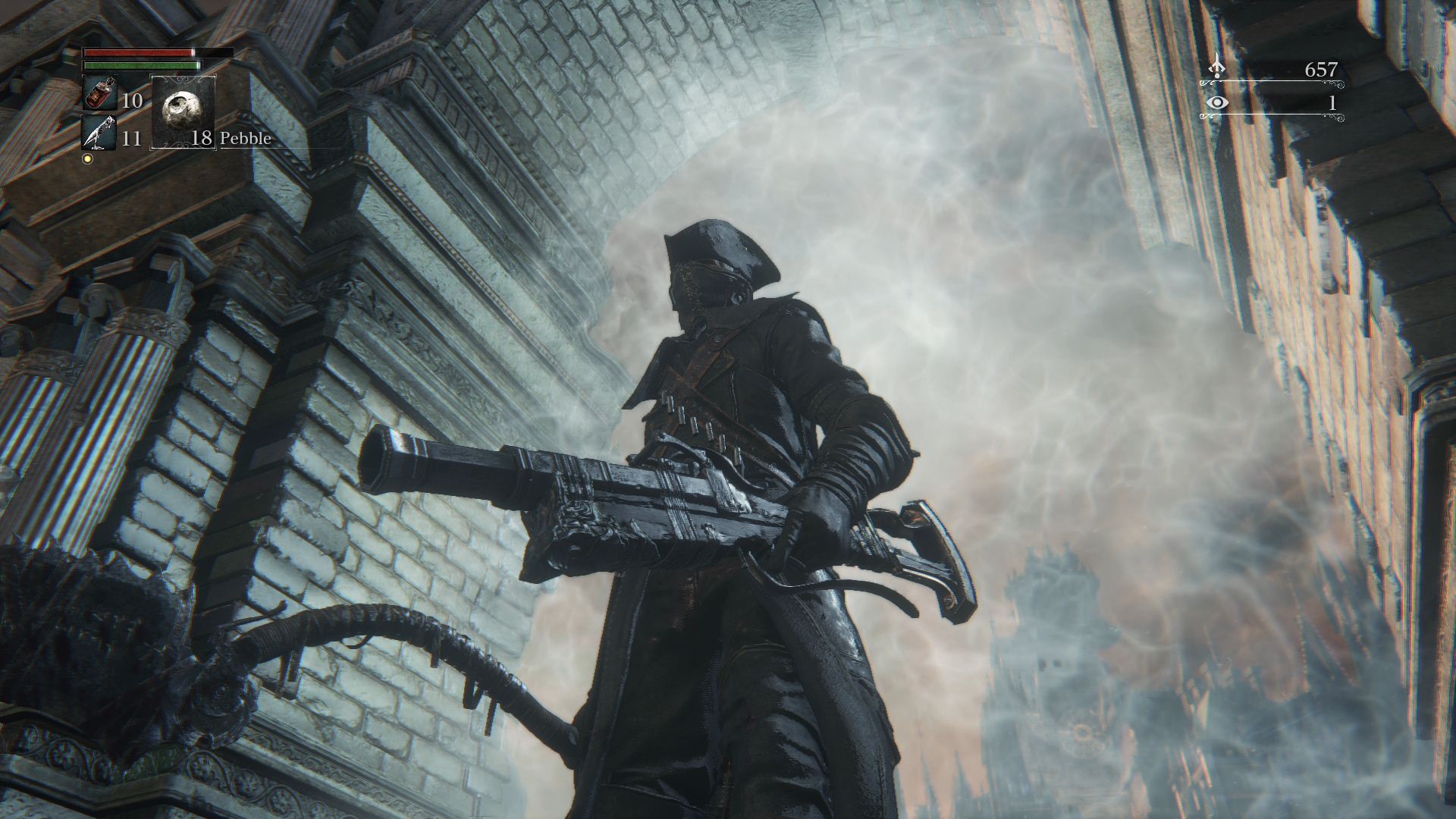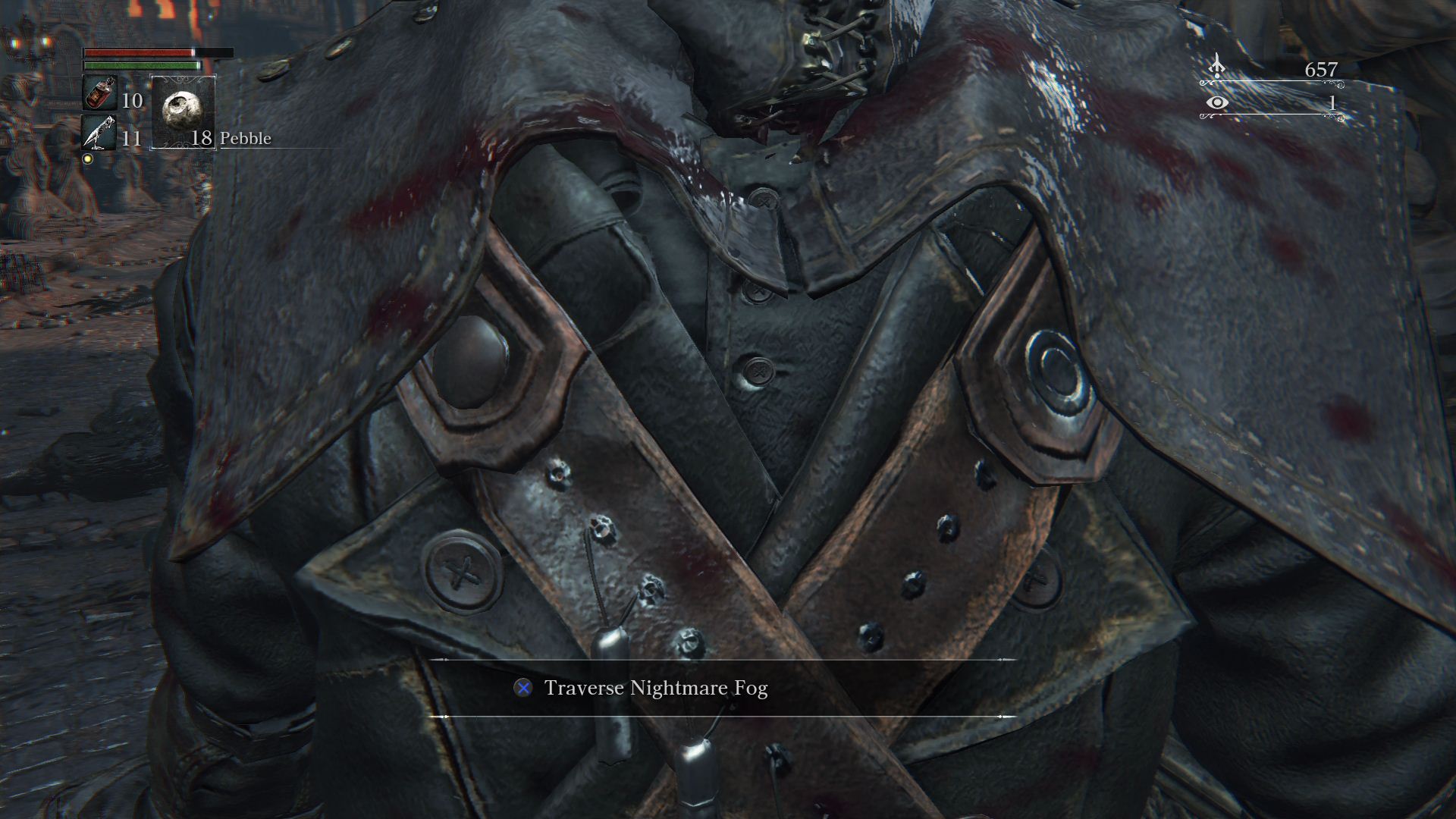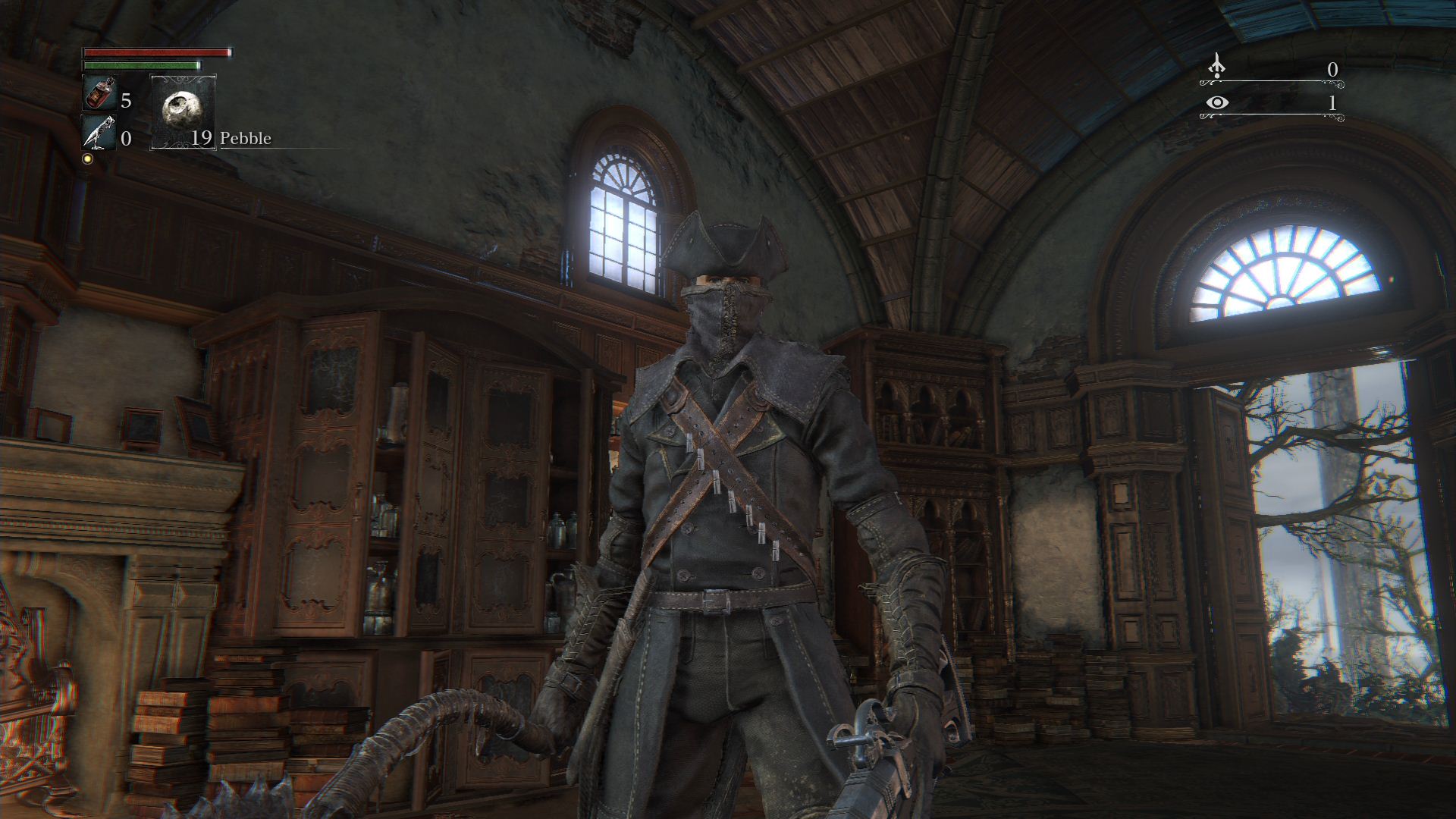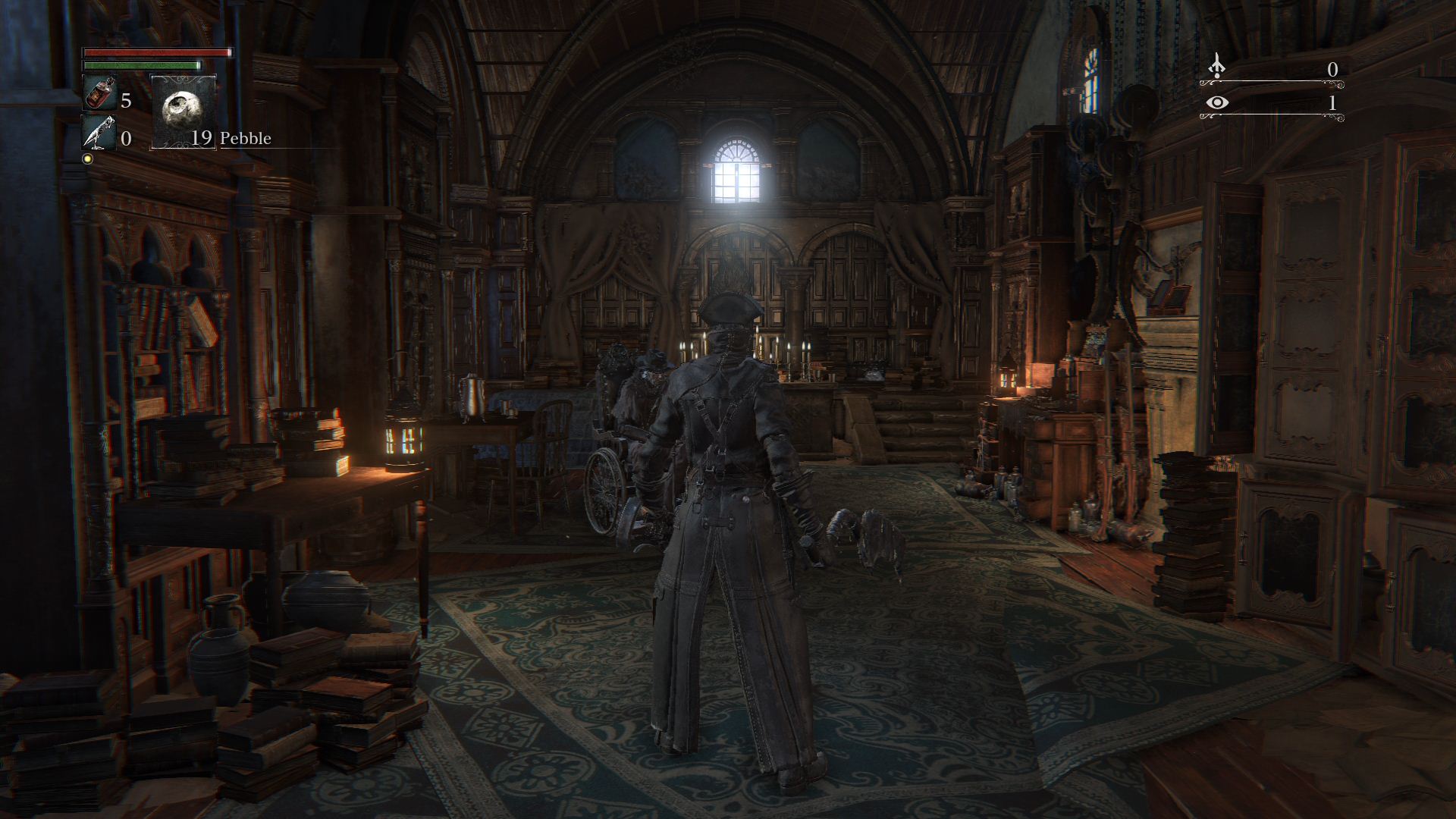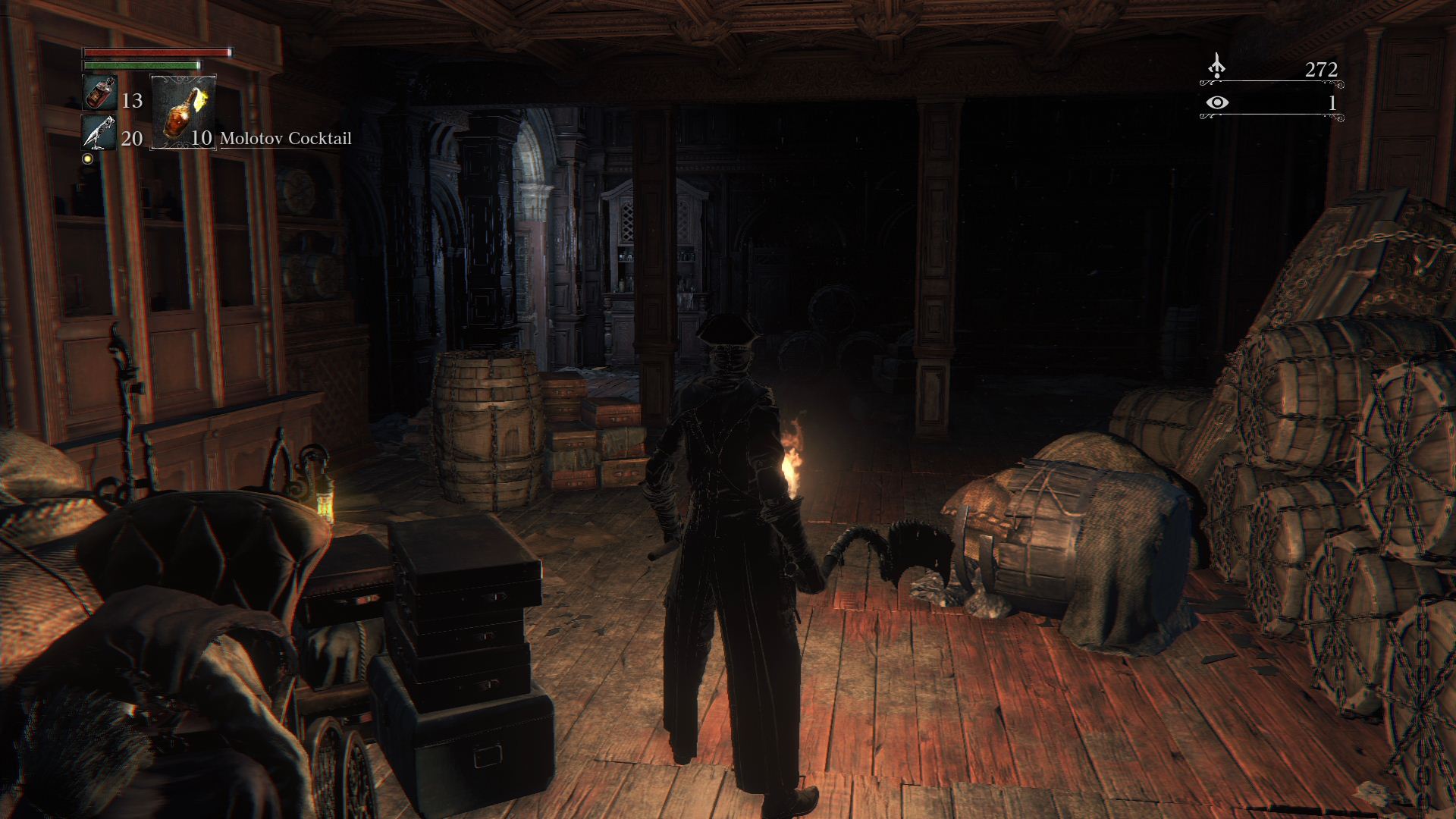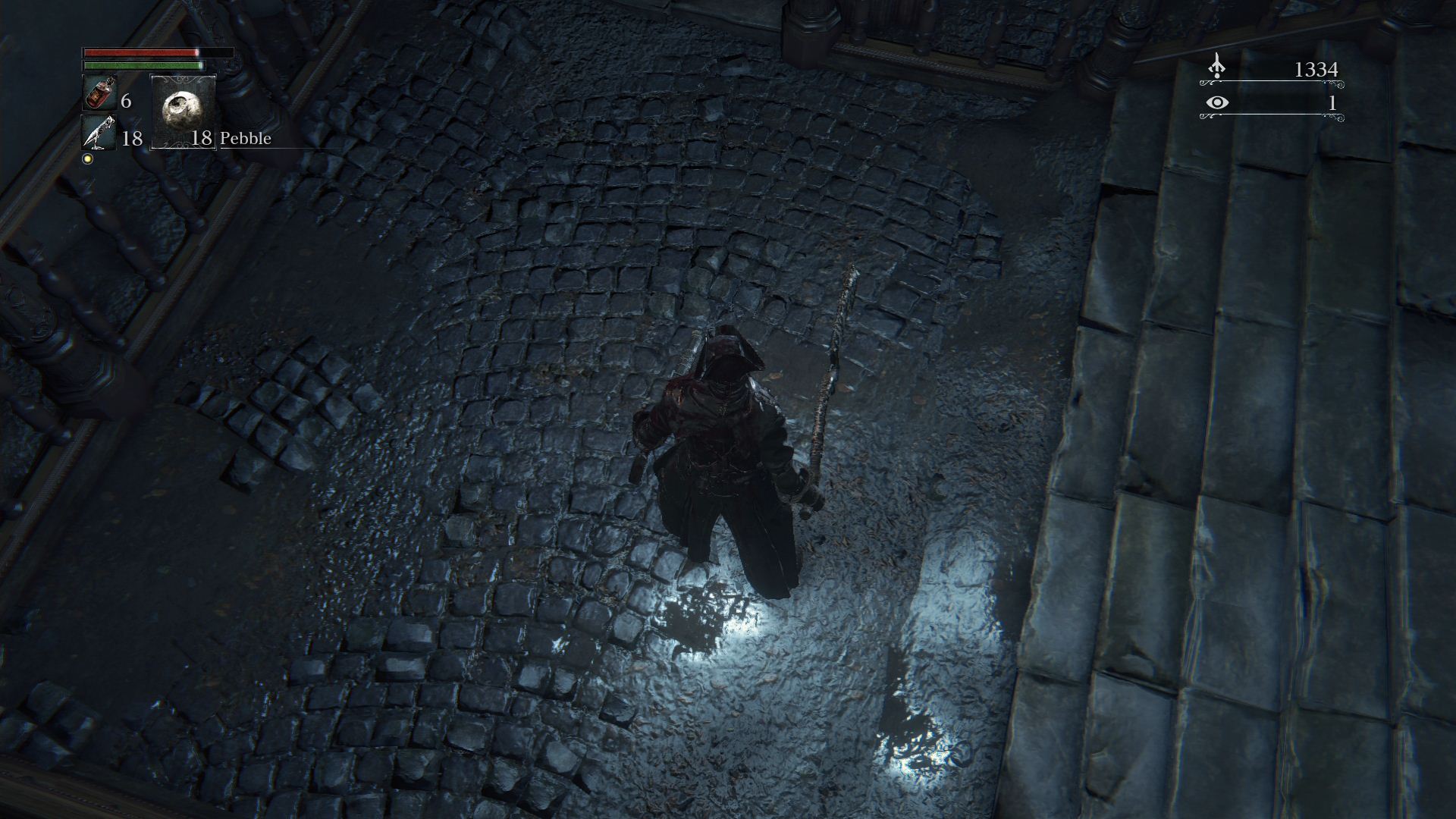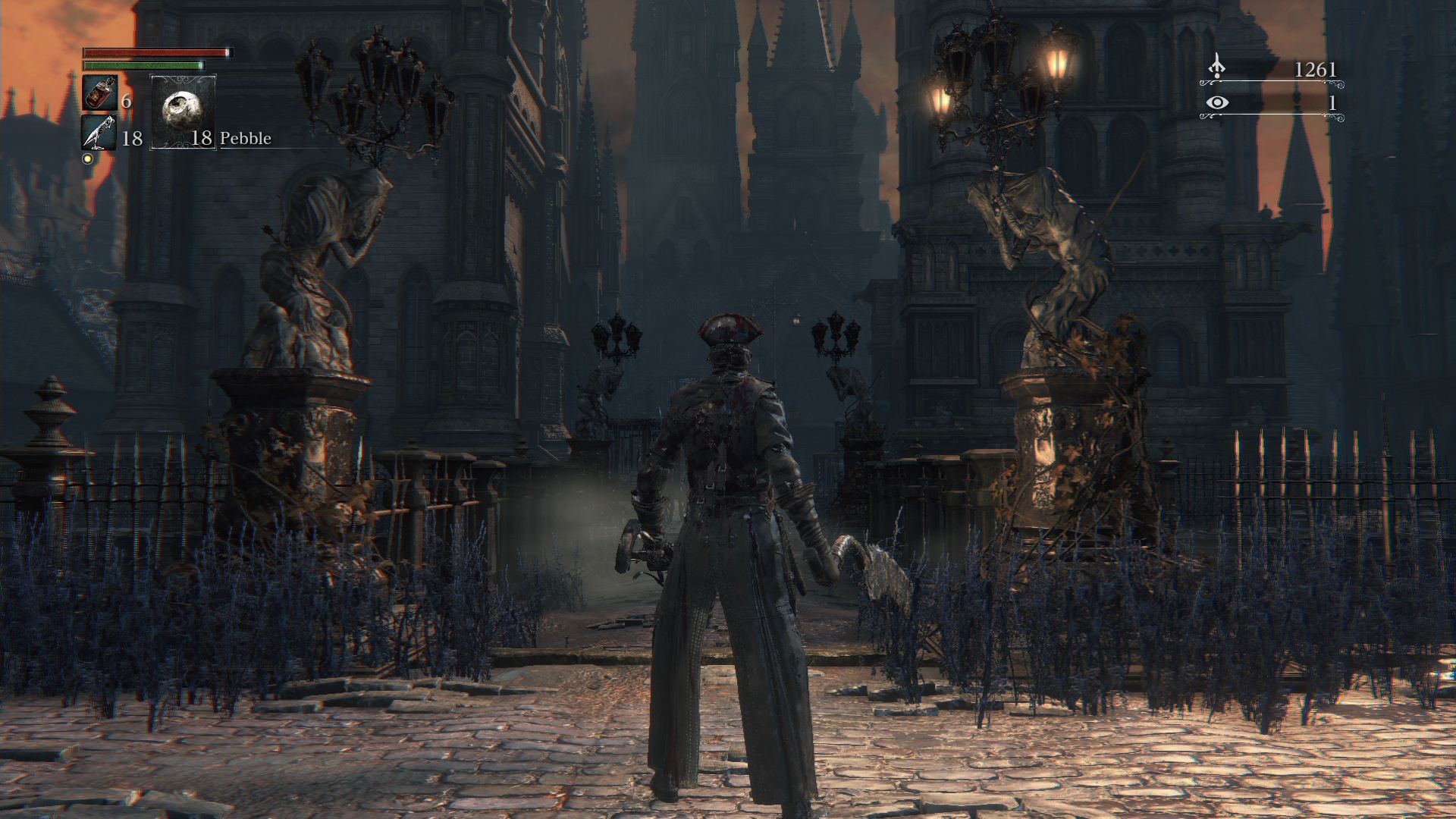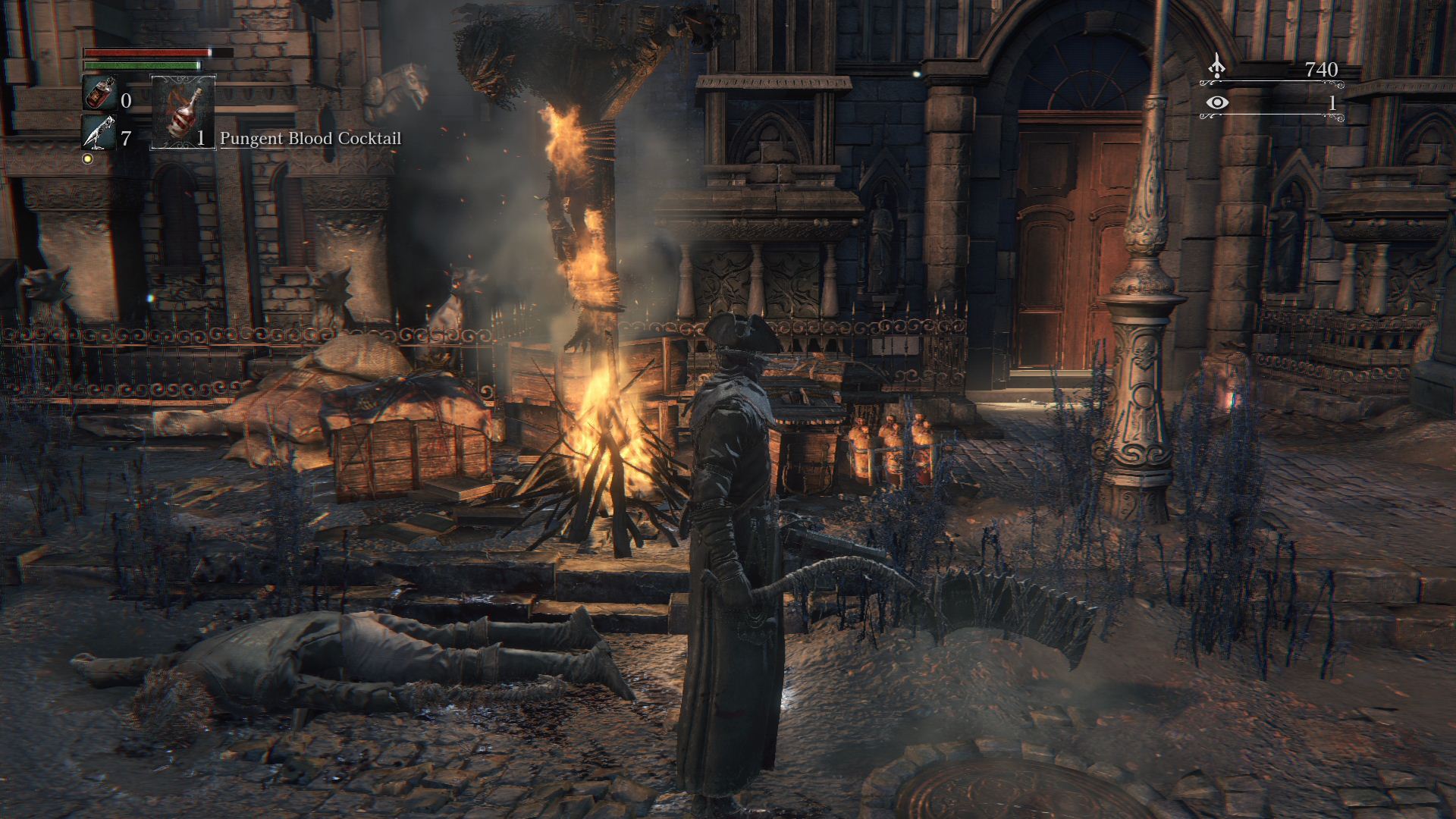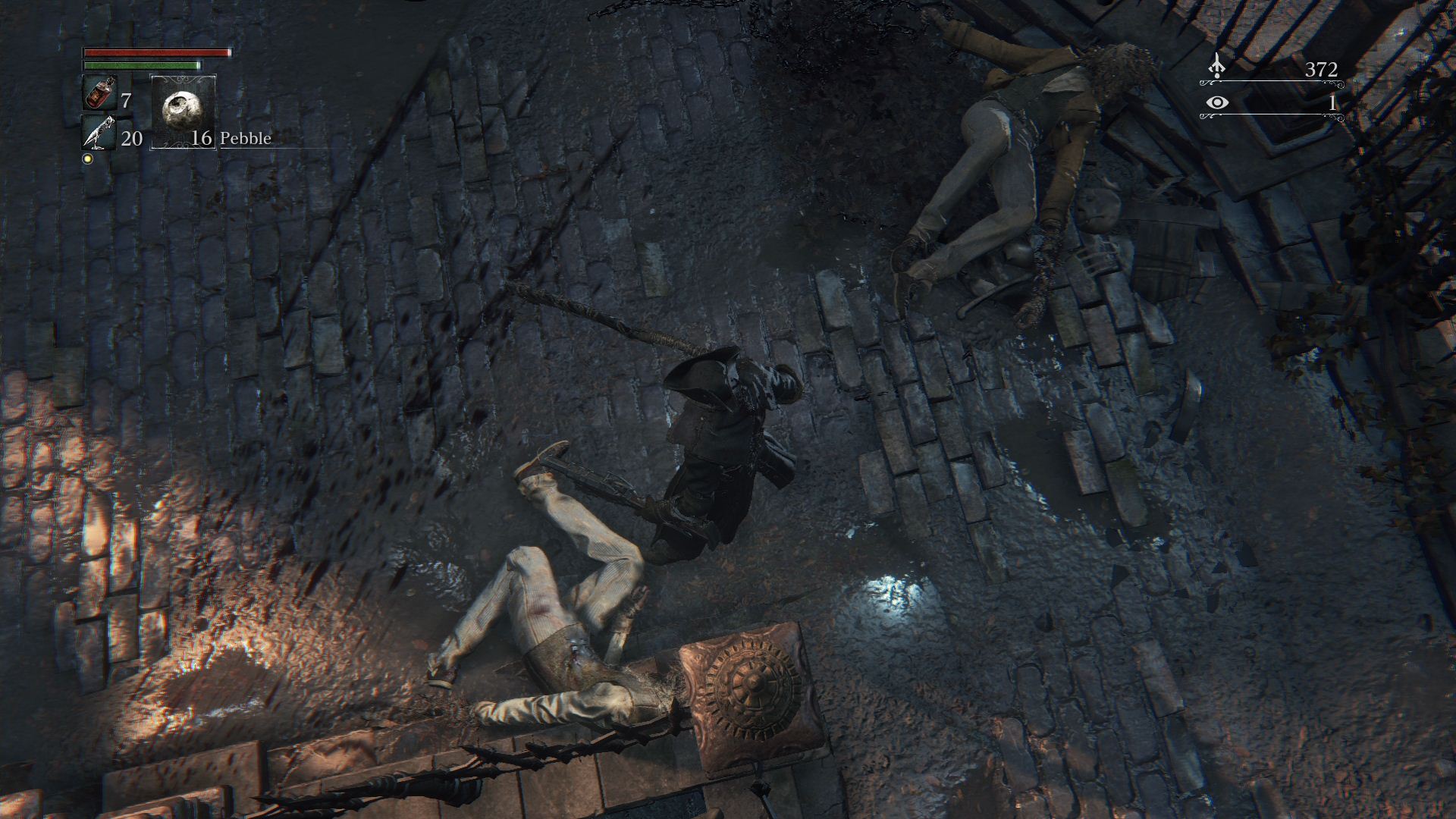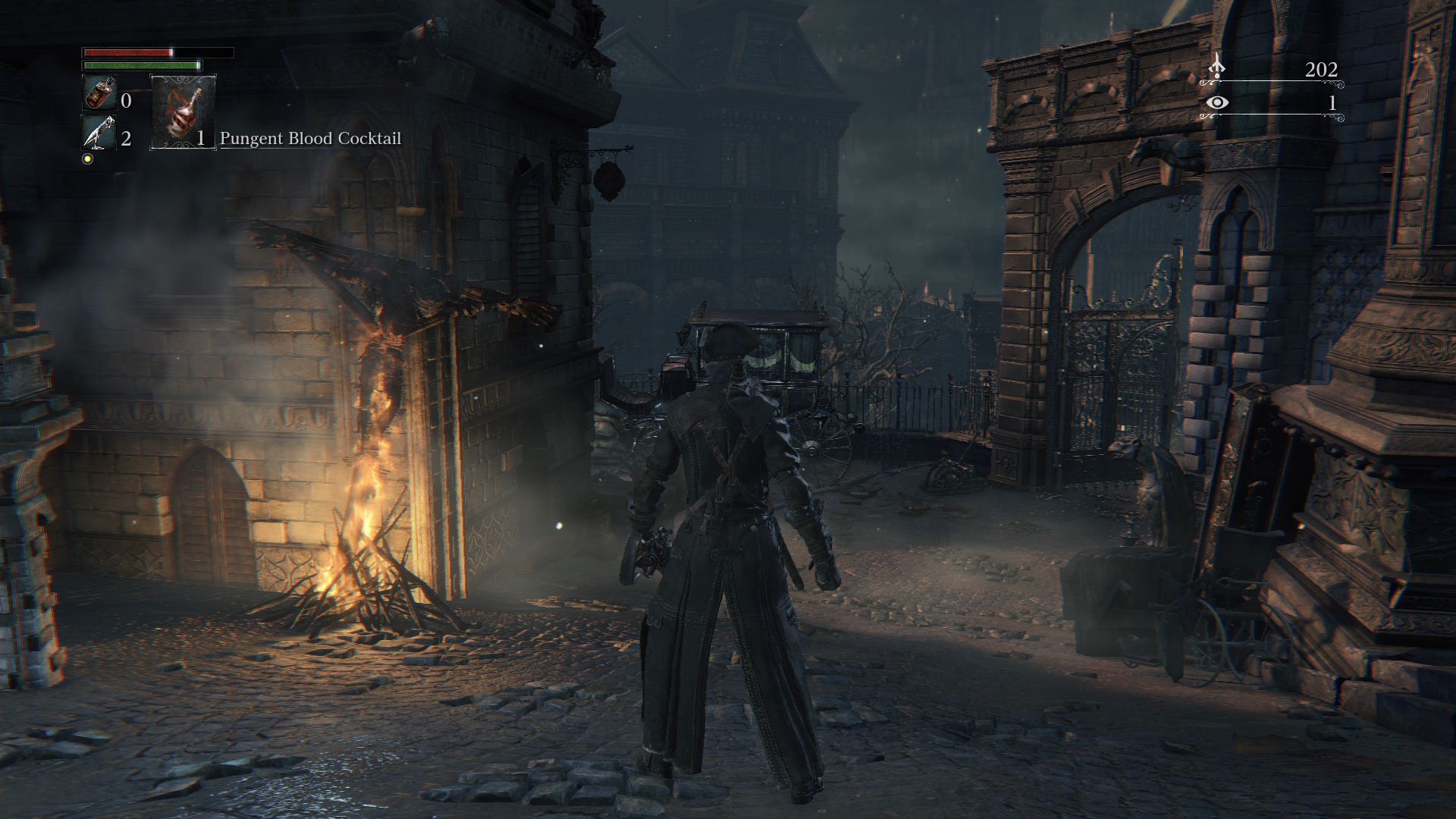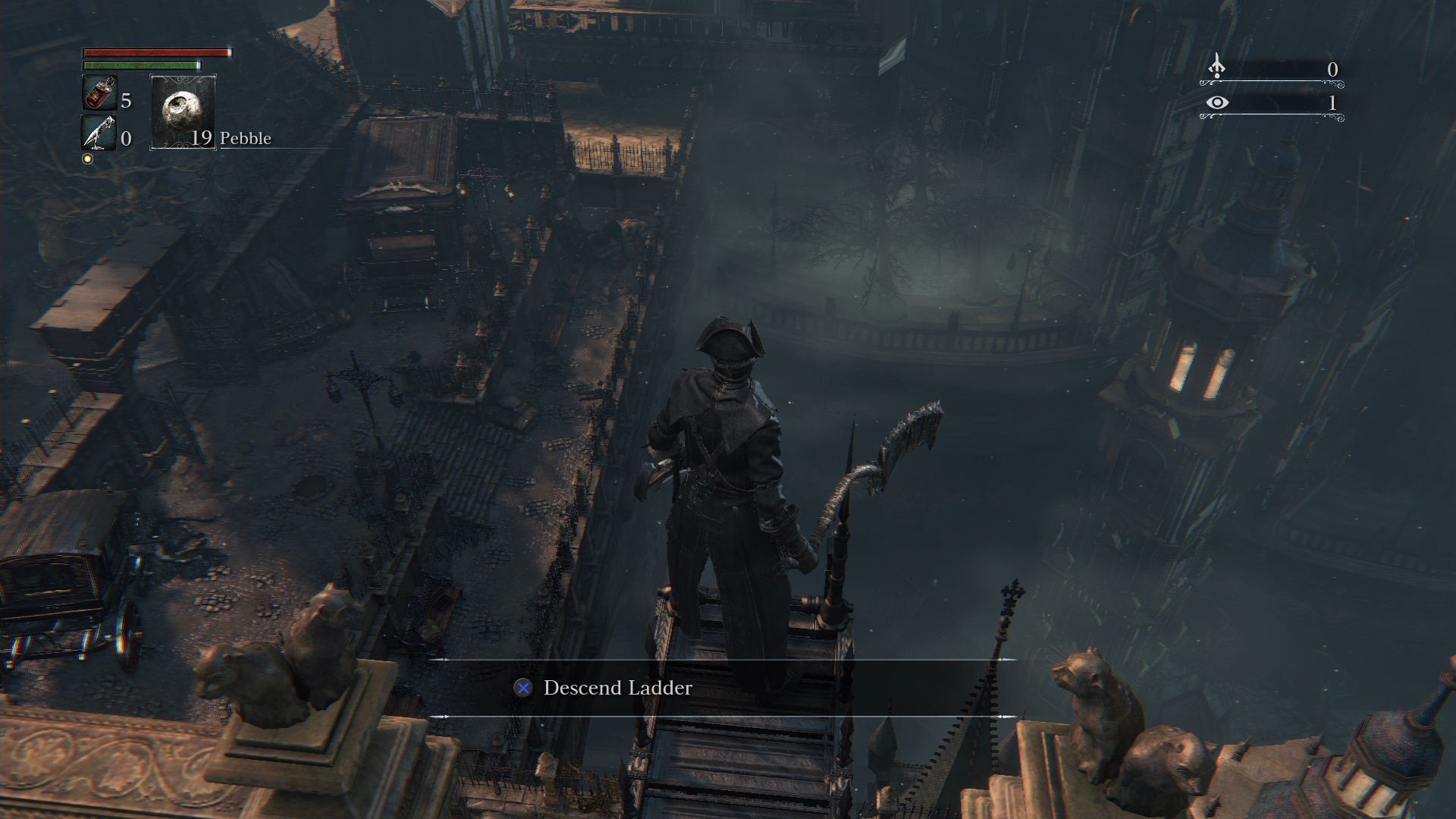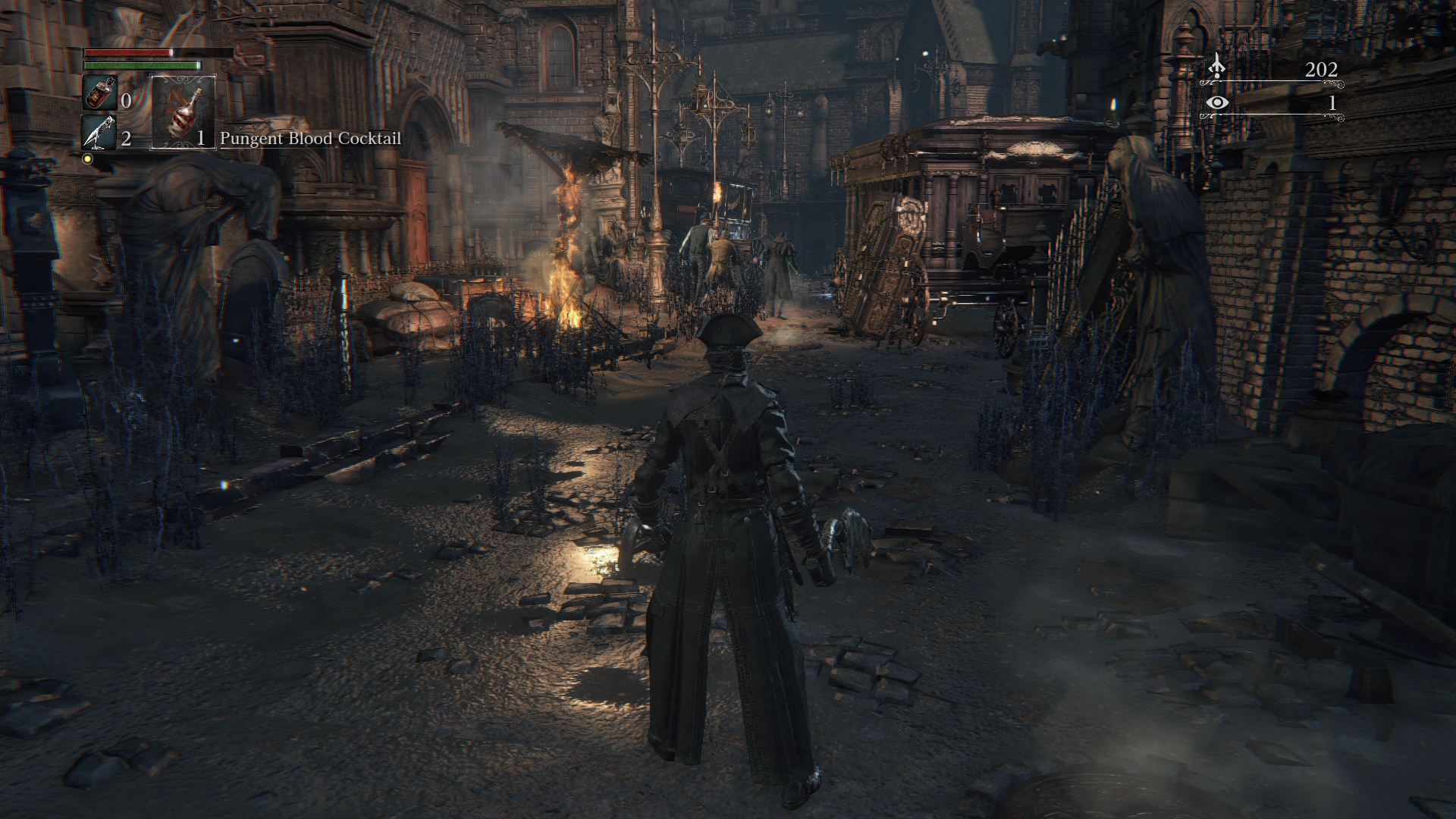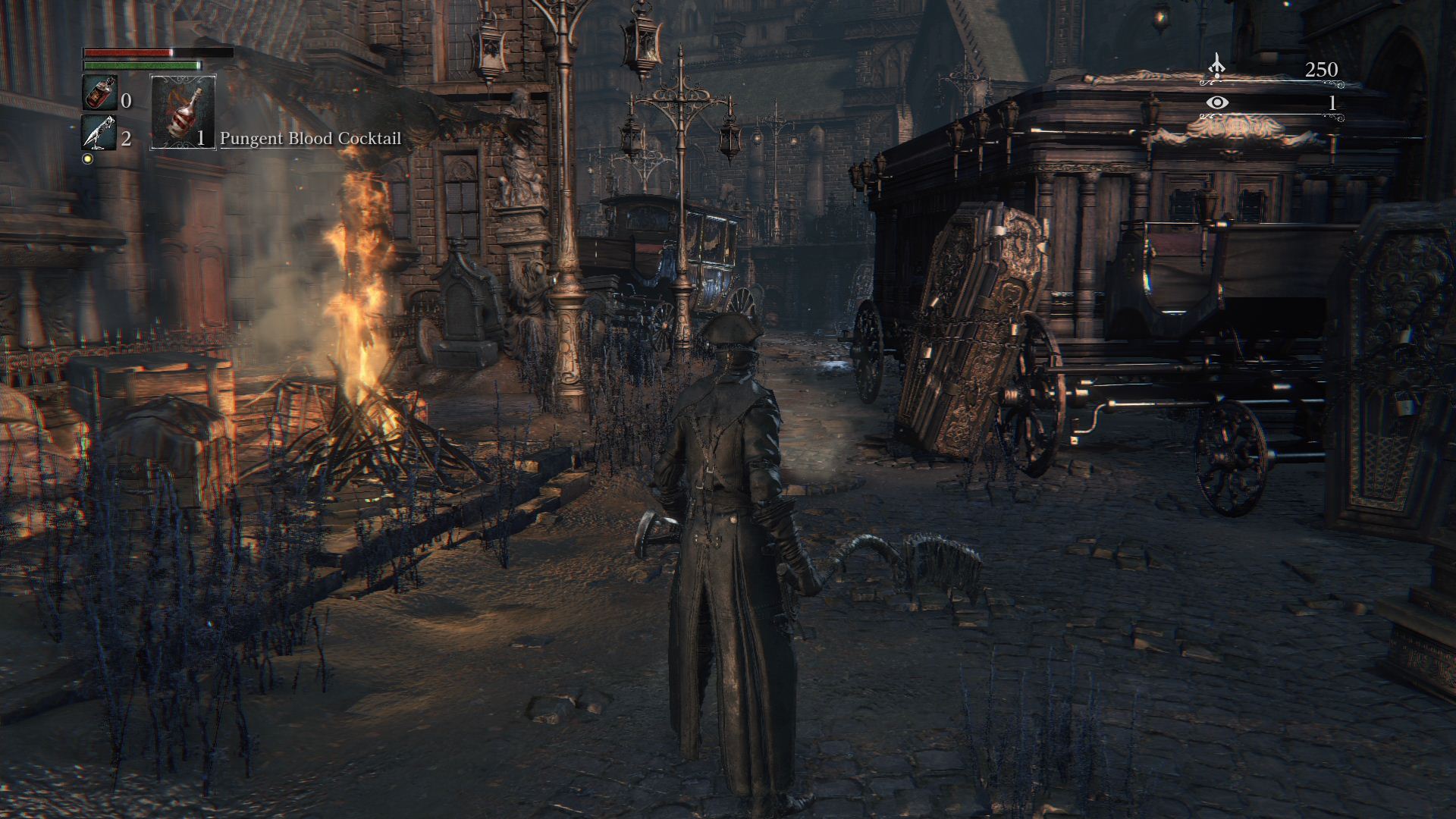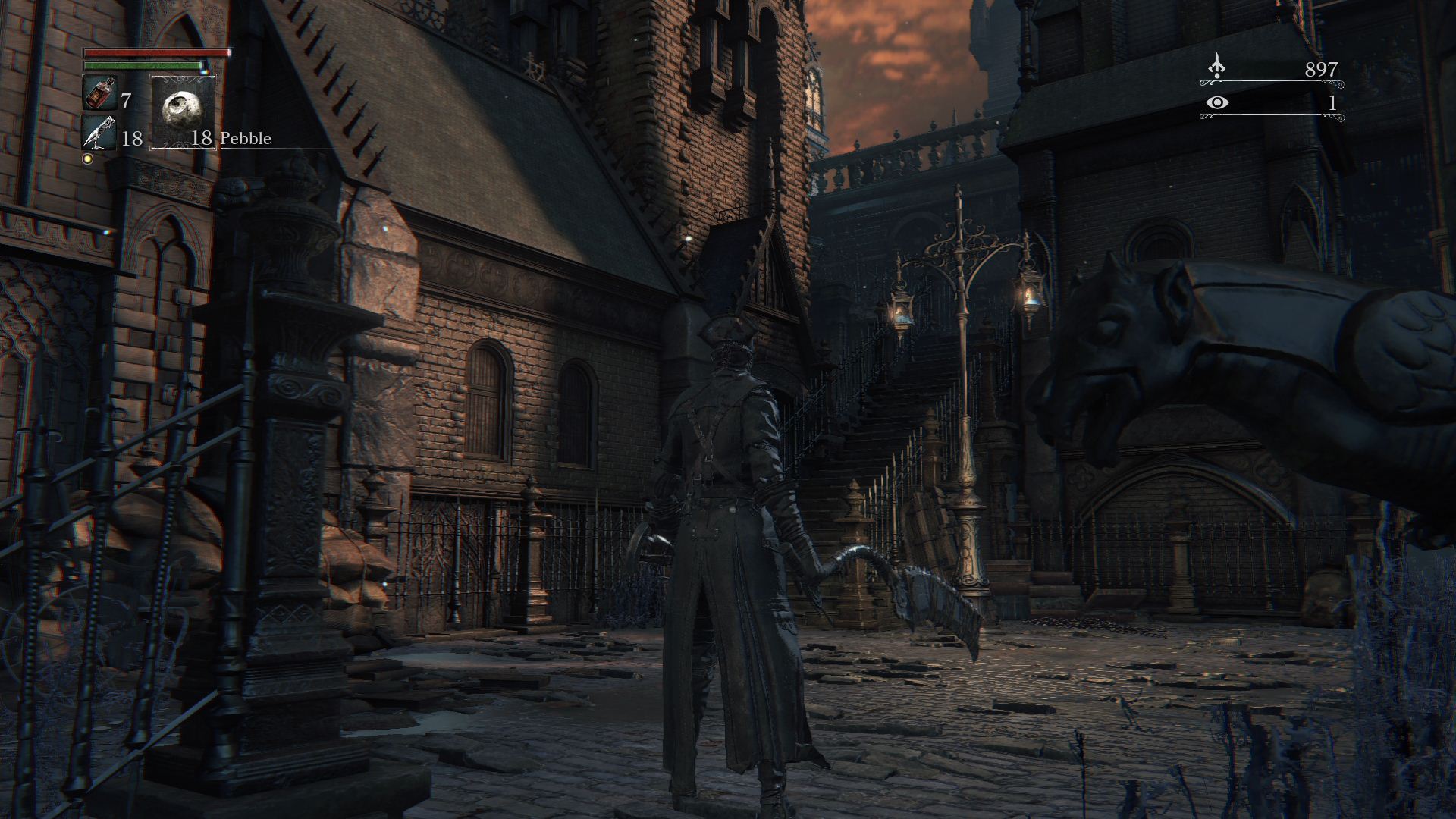
You can’t find a more storied contemporary franchise that remains so niche while still being so popular among consumers like From Software’s Souls series. This includes Demon’s Souls, a break-out hit on the PlayStation 3, Dark Souls and Dark Souls 2 (which recently received an update in the form of Scholar of the First Sin, bringing the title to PS4 and Xbox One). While Bloodborne is an entirely new game set in a new universe with new fighting mechanics, it still very much adheres to the Souls series in its gameplay, pacing and atmosphere.
It’s definitely an odd fact that From Software used Sony’s internal PhyreEngine to develop Dark Souls on both the PS3 and Xbox 360 after using it for Demon’s Souls. This is particularly interesting when you consider that, at the time, both versions showcased nary a difference in frame rate and resolution with the game rendered at 1024×720 resolution. The step down from a 1280×720 resolution seen in Demon’s Souls was tantamount because it allowed Dark Souls to use MSAA 2x for its anti-aliasing.
Bloodborne Graphics Overview. Please select 1080p and 60fps for best possible video quality.
Bloodborne’s long loading times are no doubt frustrating.
Dark Souls 2 returned to the 1280×720 resolution, relying on a post-process edge filter this time around, but cracks began to appear in the overall visuals. An uncapped 30 FPS frame rate resulted in severe drops and screen-tearing on the Xbox 360 version of the game while level of detail scaling was dramatically increased leading to unnatural pop-in of enemies, shadows and objects.
And so we come to Bloodborne, From Software’s first PS4 exclusive. It’s only fitting that it continued the blunders of past games on more powerful hardware (which was still easier to develop for than the PS3) but we’ll get to that. Several different members of the GamingBolt team experienced Bloodborne, leading to an overall better impression of the game and more information. Here’s what we found.
Bloodborne runs at a native 1920×1080 resolution on the PS4 with an unlocked frame rate. Notice the lack of a number? That’s because not only is Bloodborne not running at 60 frames per second but its frame rate also isn’t locked at 30 frames per second. The lack of a 60 FPS option would be understandable if Bloodborne was an open world game but it’s not. To see the frame rate to drop as low as 24 frames per second in some instances is disappointing.
Along with drops in the frame rate, judders and stutters have also been seen which drag the experience down. We often witnessed drops while running through corners which resulted in sudden camera switches. This was troubling especially during boss battles and drags down what’s otherwise an immensely enjoyable game.
The material rendering of weapons in Bloodborne are top notch.
Physical based rendering per material such as the leather jacket below results into excellent per object light variations. Even the position of blood stains vary according to the angle of strike.
Global Illumination is present in some cases but its implementation is inconsistent.
By now, most players would have witnessed the horrific loading times in Bloodborne which can go more than 30 seconds when trying to re-enter the game. From Software has already confirmed a patch for the loading times and while there are no loading times between different sections in an area, it’s important to consider that this is a game where players will die. A lot. Taking so long to respawn into the fray only increases the aggravation.
Also, remember that MSAA 2x seen in the first Dark Souls? Despite a sequel and an upgrade in console technology, From Software hasn’t implemented any anti-aliasing into Bloodborne. Considering that Killzone: Shadow Fall, a PS4 launch title, managed a custom FXAA + TMAA solution, it’s amazing that From Software couldn’t even add FXAA. Even Dark Souls 2 had a post-process edge filter yet Bloodborne on the PS4 has no AA whatsoever. There’s a fair bit of chromatic aberration which gets affected by the number of jaggies owing to lack of AA which drags the visuals down by a bit.
The overall texture assets for character selection and customization screens come across poorly as well, especially when looking at the in-game models. The level of detail in Bloodborne is also problematic with many details being lost out upon viewing over a distance. The lack of AA only further degrades this.
Thankfully, Bloodborne has its positive points. Physical based rendering is in effect, allowing for various lighting effects on different materials like wood, metal and statues. Global illumination is present in some places but the lighting engine delivers softer shadows without much issue. The overall cloth simulation is excellent thanks to the texture modelling and PBR. This ensures that you see every little detail from blood stains to interwoven stiches in crisp detail.
Bloodborne employs an excellent anisotropic filtering solution resulting into detailed textures.
Screenspace Reflections, Dynamic Lighting, Enhanced Volumetric Effects, Parallax Occlusion are the highlights of Bloodborne.
Level of detail deterioration is observed and the draw distances are mediocre at best.
Overall destructibility has enhanced with even more objects to smash than before, though this is only limited to wooden objects. Draw distance is great and it’s a shame that the LOD scaling and lack of AA result in distant objects having very little detail. Volumetric effects like fire, fog, wind and dust are rendered amazingly well and From Software uses adaptive tessellation and parallax occlusion to give each environment its fair share of bumps. There’s an extensive use of screen space reflection, a heavy amount of fur and skin shaders, and some pretty impressive reflections and surface textures. If that wasn’t enough, Bloodborne can be credited for having the best anisotropic filtering seen in a PS4 title till date (yes, even better than The Order: 1886).
There are still a fair amount of glitches though such as the rag doll physics causing enemies to be dragged along as the player moves. Without question, it looks weird and not something you’d expect from a game implementing Havok physics.
At least Yebis 3 – used for various depth of field, camera and lighting effects – delivers excellent post-processing effects. You’ll notice it best when using weapons and fighting enemies and bosses. The per object motion blur and depth of field are applied unevenly, the former heavily utilized while the latter sparingly so. Oddly enough, the HDR system – exemplified best in Final Fantasy 15 – of Yebis 3 isn’t used in Bloodborne.
Bosses have complex fur simulation and animations.
The game has no AA. Chromatic Aberration is used but the lack of AA deteriorates its effect.
At the end of the day, it’s amazing to consider the technology backing From Software’s Bloodborne. Yebis 3, Havok, FMOD Sound System, separable subsurface scattering (which is used to render realistic skin), Simplygon (a 3D optimization middleware which creates simplified LOD models at a distance) and Shader X5/X6 (which are two advanced rendering technique manuals by former RAGE Engine lead graphics programmer Wolfgang Engel) are several of the technologies in use here…and yet, the sum feels somewhat underwhelming. We loved the gothic aesthetics of Yharnam and while Bloodborne is the reason to own a PS4 right now, it’s not a showcase for the console’s graphical power.
Actually, it feels like Bloodborne was trapped in the transition from previous to current gen hardware. That still doesn’t explain the horribly long loading times and hopefully, the upcoming patch will address them (look forward to a future article comparing the differences in loading times post-patch).
From Software doesn’t have to prove anything in terms of gameplay and while the studio has never been about premium visuals, it’s a different generation. You can deliver fantastic levels and aesthetics, great animations and post-processing effects along with stellar anisotropic filtering. However, if the end performance suffers – as seen with the lack of AA, frame rate stutters and drops, and long loading times – then it only taints what the good work that the studio has put forth. And that’s disappointing when you consider how much better the visual experience could be with a few optimizations and additions.
GamingBolt’s Bill Smith did the primary analysis of this game. Additional assets were provided by Rashid Sayed and Senior Editor Ravi Sinha came up with additional pointers.








